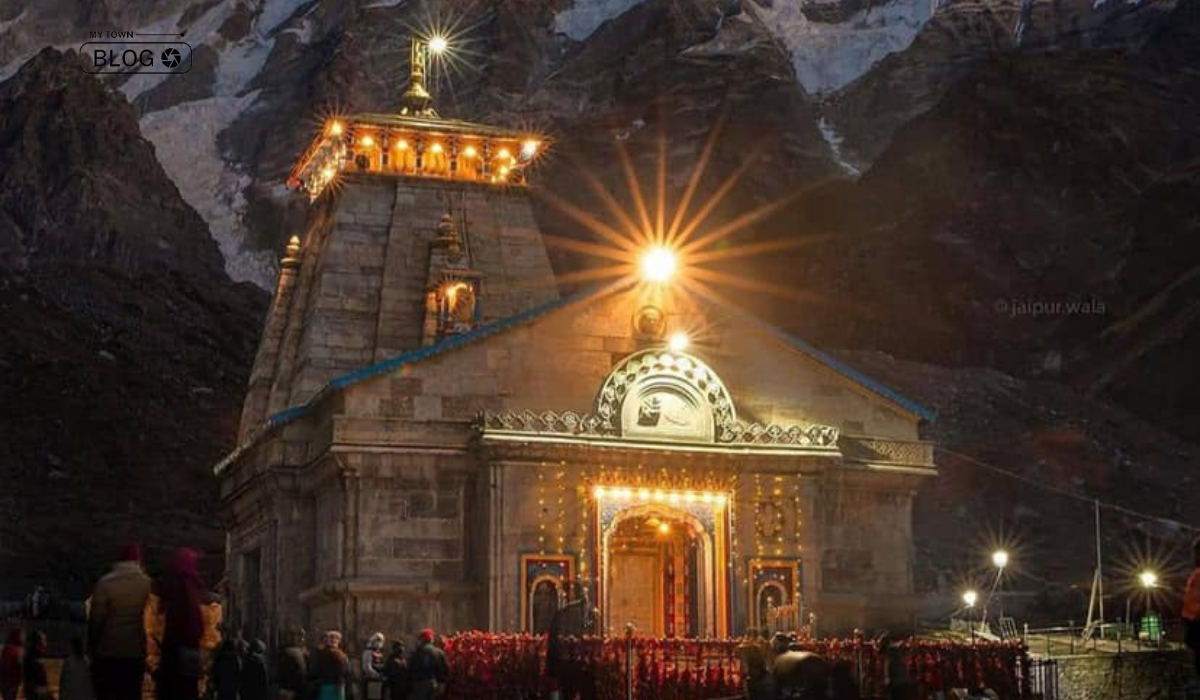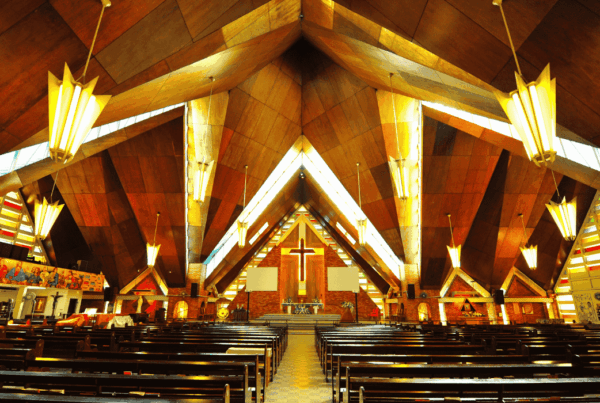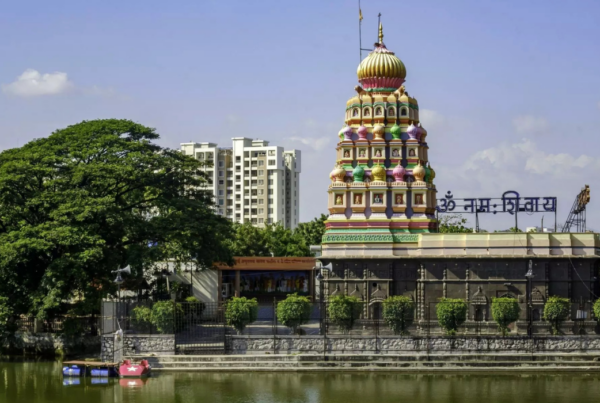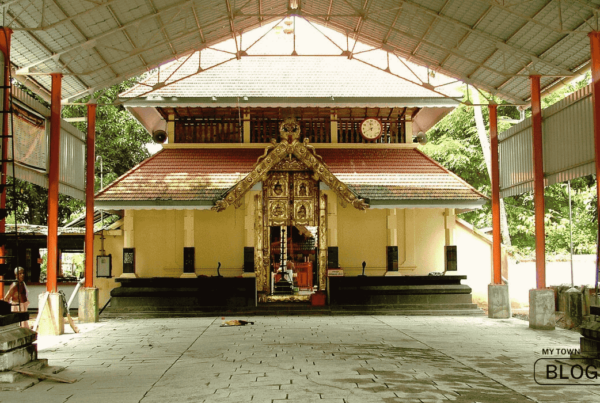One of Lord Shiva’s twelve Jyotirlingas, Kedarnath Temple is a well-known Hindu sanctuary known as the “temple of the God of that area.” It is situated in the center of the Garhwal Himalayan range in the Indian state of Uttarakhand, next to the Mandakini River. It is incredibly sacred. Due to the severe weather patterns in the area, devotees are only welcome to visit the temple from April (Akshaya Tritiya) to November (the month of Kartik Purnima), which falls on the first full moon. During the winter months, the deity is ceremoniously relocated to Ukhimath for worship over the next half-year.
It’s not easy to reach the temple; it requires a 22-kilometer (14-mile) trek from Gaurikund. To get to the temple, travelers can use a riding horse, horse, or an automated mode of travel. Hindu mythology states that the temple was constructed initially by the Pandavas during their reign. It is widely respected as one of the 12 Jyotirlingas, which are considered to be Shiva’s most sacred temples. Legend has it that Lord Shiva was delighted when the Pandavas at Kedarnath offered an apology for their infractions.
As the first of the Five Kedar devotion sites, Kedarnath is a well-known Char Dham devotion site in the North Mountains of India. Remarkably, it stands as the loftiest among the twelve Jyotirlingas. Its importance is not limited to any one area; the Tevaram, an extremely praised Shaivite Tamil literature written by sixty-three gurus known as Nayanars in the sixth and seventh centuries, cites it. Renowned saints such as Appar, Sundarar, Thirugnanasambandar, and Sekkizhar hailed their exquisite beauty in their poetry.
History:
Situated on the banks of the Mandakini River at a height of 3,583 meters (11,755 feet), the fabled roots of Kedarnath Temple remain a mystery. Its name, meaning “the lord of the field,” reflects its significance as a place where “the crop of liberation” supposedly thrives, as per the Kashi Kedara Mahatmya.
According to folklore, the Pandavas, seeking redemption for their Kurukshetra war sins, pursued Lord Shiva, who disguised himself as a bull. Bhima, recognizing the bull as Shiva, tried to restrain it but only caught its tail and hind legs as it vanished. Shiva later reappeared at various sites, forming the Panch Kedar temples.
Some versions claim Bhima tore the bull into five parts, leading to the creation of the Panch Kedar Temples. After building these temples, the Pandavas performed rituals at Kedarnath before attaining salvation.
Completing the pilgrimage to Panch Kedar entails a visit to Lord Vishnu at Badrinath Temple, symbolizing devotion to both deities.
While the Mahabharata doesn’t mention Kedarnath, the Skanda Purana recounts Shiva releasing the Ganges from his hair there.
Adi Shankara’s hagiographies differ on his death location, but his Mahasamadhi is associated with Kedarnath. Texts like Kritya-kalpataru note the prominence of the temple.
The Kedarnath Teerth Purohits, ancient Brahmins, have worshipped the lingam since ancient times, with King Janmejay granting them the temple rights.
Anecdotes, such as one from English mountaineer Eric Shipton, suggest the long-standing connection between Kedarnath and Badrinath temples.
Furthermore, recent research unveiled surprises about the temple’s age. Scientists discovered that the temple lay hidden under snow for about four centuries due to a mini ice age, as evidenced by yellowish lines on its walls. This revelation underscores the temple’s resilience and the thoughtful design that has enabled it to withstand harsh climatic conditions.
Four Centuries Hidden Under Snow:
Though the exact year of the construction of the Kedarnath Temple remains unknown, its mysteries have long intrigued scientists. A research team from Dehradun conducted studies on the temple walls to uncover its age. Surprisingly, they discovered that the main temple had been buried under snow for the past four centuries. Through extensive testing, they observed yellowish lines on the exterior walls, indicating the temple’s concealed existence during a mini-ice age that enveloped the Rudraprayag region.
The resilience of the temple, enduring such harsh conditions, is remarkable. Despite the prolonged exposure to ice, the temple structure remained intact without any visible damage. This suggests a meticulous architectural design, crafted to withstand extreme weather. It is clear that the temple’s constructors took into account the difficult weather and built it to survive the worst situations.
Rituals:
The Veerashaiva the group in Karnataka is the source of the temple’s chief priest Raval. Unlike at the Badrinath temple, the Raval at Kedarnath doesn’t directly conduct the rituals. Raval’s assistants perform the pujas under his guidance. During the winter season, the Raval accompanies the deity to Ukhimath. There are five main priests at the temple, taking turns serving as head priest for a year. As of 2013, Shri Vageesha Lingacharya from Davanagere district, Karnataka, holds the position of Raval.
Several symbols associated with the Pandavas surround Kedarnath. Raja Pandu passed away at Pandukeshwar, and local tribals commemorate the Pandavas through a dance called “Pandav Lila.” The mountain peak where the Pandavas ascended to heaven, known as “Swargarohini,” lies near Badrinath. Legend has it that as Yudhishthira left for heaven, one of his fingers fell to the earth, where he installed a small Shiva Linga. Lord Shiva and Bheema are believed to have acquired the triangular Shiva Lingam, known as Mashisharupa, through a mace fight. Bheema, overwhelmed with remorse, massaged Shiva’s body with ghee, a tradition still observed today.
The Leadership Team:
The Kedarnath Temple, along with the Badrinath Temple, was incorporated into the Uttar Pradesh State Government Act No. 30/1948, recognized as Act No. 16,1939, named the Shri Badarinath and Shri Kedarnath Mandir Act. Initially administered by a committee nominated by the state government, the act underwent modifications in 2002 by the Uttarakhand State Government. These amendments included the addition of government officials and a vice-chairman to the committee. The board comprises seventeen members in total: three appointed by the Uttarakhand Legislative Assembly, one from each District Council of Chamoli, Pauri Garhwal, Tehri Garhwal, and Uttarkashi districts, and ten nominated by the Government of Uttarakhand.
On the religious front, the temple’s administration includes a Rawal (chief priest) and three other priests: Naib Rawal, Acharya/Dharmadhikari, and Vedpathi. The administrative framework of the temple involves a chief executive officer responsible for executing state government directives. A deputy chief operating officer, two OSDs, a chairman, an accounting employee, a temple employee, and an advertising officer support the chief executive officer.
2013 Floods:
The Kedarnath valley and several other parts of Uttarakhand saw record flash floods on June 16 and 17, 2013. Following flooding caused by a collapse of soil close to the Kedarnath Temple, water from Chorabari Tal raced down the Mandakini River, destroying everything in its path. Then, on June 17, waters rushed out of Chorabari Tal and the Saraswati River, bringing a lot of rocks, dirt, and stones. Amazingly, a huge rock shifted into position behind the Kedarnath Temple, sheltering it from the most serious of the flood’s damage. Eyewitnesses noted another large rock diverting debris away from the temple’s rear, mitigating potential damage. People revere this protective rock as the “God’s Rock” (Bheem Shila).
Another contributing factor to the temple’s survival could be its construction. Although the temple endured the floods, the surrounding area suffered extensive destruction, resulting in numerous casualties among pilgrims and locals. Severe damage occurred to infrastructure such as shops, hotels, and roads in Kedarnath. Many sought refuge inside the temple until rescued by the Indian Army, prompting the Uttarakhand Chief Minister to announce the temple’s closure for a year to facilitate debris clearance.
With help from IIT Madras, specialists from the Archaeological Department of India examined the temple’s structure following the floods and found no indication of danger to its stability. After conducting non-destructive tests to assess the structure’s condition, they produced an initial report verifying the temple’s safety.
The task of reconstructing Kedarnath was given to the Nehru Institute of Mountaineering (NIM), despite their lack of experience with construction or urban planning. Under the guidance of seasoned mountaineer Colonel Ajay Kothiyal, NIM worked nonstop for a year, making it possible for the pilgrimage to begin the next year.
Where You Stay At Kedarnath:
Kedar Homestay
Kedar homestay is set in Kedārnāth. The accommodation is non-smoking.
Gauri kund – Kedarnath Trekking Way, Kedārnāth, India
Tent Prithvi Yatra Hotel kedarnath
Tent Prithvi Yatra Hotel Kedarnath features accommodations in Kedārnāth. The hotel has family rooms.
Kailash Guest House
Situated in Kedārnāth in the Uttarakhand region, Kailash Guest House has a terrace. This homestay features accommodation with a balcony. The homestay features a flat-screen TV. Towels and bed linen are available in the homestay. The accommodation is non-smoking.
Hotel kedarnath By Pas Mando
Hotel Kedarnath by Pas Mando offers rooms in Kedārnāth. Both free WiFi and parking on-site are available at the guest house free of charge.
Hotel Kedarnath Opens In New Window
Hotel Kedarnath is located in Kedārnāth. With free WiFi, this 4-star hotel offers room service and a 24-hour front desk. The hotel features family rooms.
(FAQs) About Kedarnath Temple:
What is the meaning of the Kedarnath Temple?
- Kedarnath Temple, one of Lord Shiva’s 12 Jyotirlingas, is a popular Hindu sanctuary believed to provide mental liberation.
Where is the temple tourist center open?
- The temple welcomes devotees from April to November, with the deity relocated to Ukhimath during the winter months.
How may the Kedarnath Temple be reached?
- From Gaurikund, visitors can take on a tough 22-kilometer trek; other options include walking or applying horses, sneakers, or bicycles.
What exact story inspired the building of the temple?
- According to legend, the Pandavas established the temple as a place of regret for their crimes, making it one of the Panch Kedar devotion destinations.
Did the 2013 storms affect the Kedarnath Temple?
- The temple survived the destruction near it, maybe because of a big stone that served as shelter and its strong design.
Who is in charge of the temple’s leadership?
- The Uttarakhand government selects a committee to manage the Shri Badarinath and Shri Kedarnath Mandir as per the law.
What part in the restoration of the temple did the Nehru Institute of Mountain (NIM) have?
- Under Captain Ajay Kothiyal’s direction, the devotion could continue the next year thanks to NIM’s leadership of the post-flood recovery efforts.
Is there scientific evidence regarding the temple’s age?
- Recent research suggests the temple lay hidden under snow for four centuries, indicating its resilience during a mini-ice age.
Also Read: If There Is Heaven Anywhere On Earth, It’s Shrikhand Mahadev







